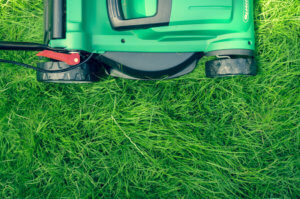
As winter melts away into spring, things may start to reappear in your yard that was previously hidden by winter’s thick blanket of snow. You may rediscover that tool that was not put away before the first significant flurries, or just the welcome signs of spring as your perennial bulbs begin to push through the surface. An unwelcome sight, however, may be the appearance of a fungal lawn disease called snow mold.
What is Snow Mold?
Snow mold grows from the spores of two types of fungi… a gray mold called Typhula blight, and pink variety called Microdochium nivalis, (also known as Fusarium patch). These molds are responsible for causing the lawn disease which resembles a spider-web like white substance. Snow mold begins growing when temperatures start to warm enough for the fungi to thrive. The pink snow mold can flourish from 32 degrees up to 60 degrees, as long as your lawn is damp, while the gray mold can grow from about 32 degrees to 45 degrees fahrenheit.
Is Snow Mold Dangerous to Your Lawn?
Though snow mold can cause your lawn to look unattractive, the fungal growth is typically not a serious concern and will dry up as the weather warms and the sun dries out and kills the infected lawn. To accelerate this process and get rid of the snow mold earlier, there are several things you can do:
- You can spread out the snow mold with a rake (being careful to not damage the grass trying to grow). This will help get air flow to the infected area and dry it out faster.
- Once your lawn is dry enough you can mow it shorter than usual. Tall grass can retain more moisture, which contributes to the fungal growth. Continue mowing the lawn in this manner until you notice the mold is no longer growing.
Snow Mold Prevention
There are a few things you can do to try to prevent the unsightly growth of snow mold:
- In late fall be sure to mow your grass to a short height and then rake up and bag the grass clippings and any leaves that are collecting in your lawn. This organic matter can trap the moisture and create a perfect environment for the snow mold fungal growth to take off as the snow melts and temperatures get to the right levels.
- Do not use a nitrogen fertilizer in the fall if you have had issues with snow mold.
- If you have larger piles of snow in certain areas, it is a good idea to spread out the snow so that it melts more quickly and doesn’t retain the moisture as long in those spots.
Snow mold is not usually a serious concern, but it can sometimes persist into late summer and fall if the weather remains damp and cool enough. If this happens it can do more damage to your lawn. Years with earlier, deeper snows often result in more snow mold growth than the winters that are colder and bring less snow. This is because the early snow blankets the ground and protects the fungus from harsher temperatures.
Have you ever had snow mold in your lawn? How long did it last and what did you do about it?
from Mold Blogger https://moldblogger.com/snow-mold-in-your-lawn/
Mold Remediation Baltimore
No comments:
Post a Comment